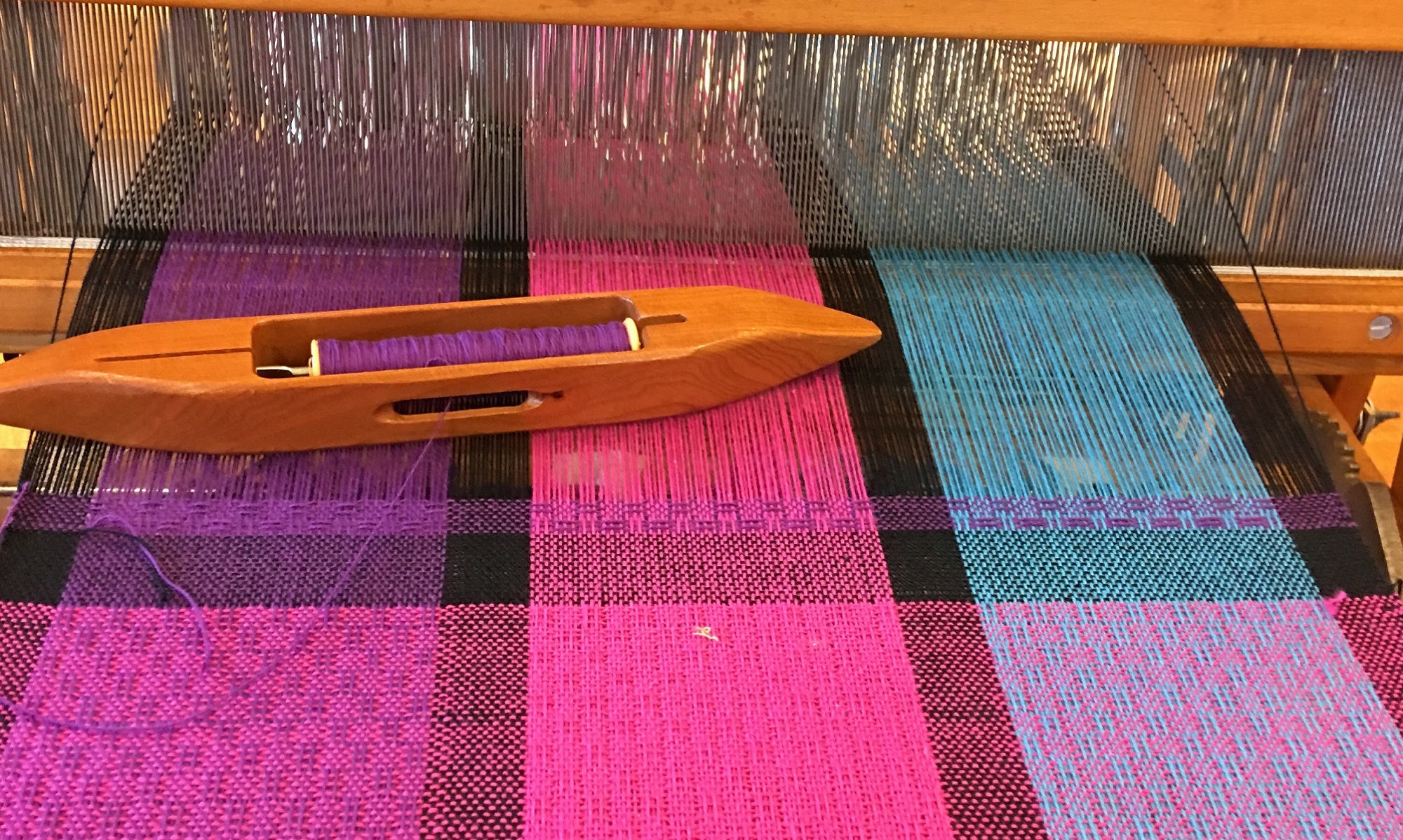
Today I depart from fiber arts and venture into the culinary arts. I am making curried lentil and sweet potato soup, homemade pitas and goetta. The picture is from the last time I made it. I served it with fresh hot rolls that day.
The soup is a great recipe that has been adapted from the Cafe Brenda Cookbook by the authors of Artisan Pizza and Flatbread in 5 Minutes a Day. I also made my own little changes to it. The recipe as I make it will follow at the end of this post. Today I made a cilantro chutney as a garnish. Other times, as pictured above, I serve it with fresh chopped cilantro, a squeeze of lime for a citrus tang and sometimes a dollop of low fat plain yogurt. The pitas are made using the methods in the Artisan Pizza book too. Yummy stuff.
When I make goetta, I use the recipe on the bag of Dorsel’s Pinhead Oatmeal with some adaptations. Pinhead oatmeal is steel cut oats. Dorsel’s is usually with the flours and cormeals in my grocery and is usually cheaper than the steel cut oats you find in the hot cereal section. Some cereal companies have come out with “quick” steel cuts oats lately, do not use those. My family loves spicy goetta for breakfast on the weekend. Goetta omelets are a particular favorite.
Curried Lentil and Sweet Potato Soup
(makes a big stock pot full)
1 large onion, diced
6-7 cloves garlic, minced
1/4 cup peeled and finely minced ginger root
olive oil
1.5 TBS curry powder (or more to taste)
1 chile pepper (or jalapeno) minced or dried chili flakes to taste
1 cup diced carrots
5 cups (about 2 lbs) sweet potatoes, peeled and diced *
*(I bake the potatoes and cut them in half and squeeze out the insides, easier than peeling & dicing)
1 14oz can coconut milk (I use lowfat coconut milk)
2 cup dried lentils (red lentils if you can find them-keeps the color of the soup nicer)
8 cups vegetable or chicken stock
juice of 1 lime or lime wedges
1 bunch cilantro, minced
plain yogurt if desired
or
serve with cilantro chutney (recipe below)
Add onion, garlic and ginger to a large pot with a bit of oil. Saute until softened. Add peppers, carrots, and curry powder. Saute about 5-10 minutes Add the sweet potato (add sweet potatoes after stock and a little simmering if already baked), stock and coconut milk. (If you couldn’t find red lentils add regular ones now too-they take longer to cook). Simmer covered about 30 minutes until potatoes (and lentils if green) are cooked. Use a stick blender to make soup a little smoother or you can leave it pretty chunky. I add red lentils after blending since they cook quicker and are softer.
Add lime juice, sprinkle with chopped cilantro and a dollop of yogurt if desired just before serving or serve with the chutney below.
Cilantro Chutney
Ingredients
1 tablespoon oil
1 large jalapeno diced (seeds and all if you want it hot).
1 tsp diced garlic
1 tsp grated fresh ginger
1 cup cilantro leaves chopped
1/4 tsp sugar
salt to taste
Directions: Heat the oil in a small frying pan and saute the jalapeno and ginger for about 2 minutes. Reduce the heat and add garlic paste. Remove from the heat and add coriander leaves and mix completely. Heat a little to wilt the cilantro. Place the mixture together with, salt and sugar in a food processor or grinder and mix until well blended.
My Healthier Version of Dorsel’s Goetta in the Crockpot
6 cups water
2 1/2 cups Pinhead Oatmeal (Steelcut)
1 lb. lean ground beef
1 lb. turkey breakfast sausage
1 Tbs. olive oil
*1 large onion diced
2 to 4 bay leaves
3 teaspoons salt
1/4 tsp of black pepper
1/2 to 1 tsp. Hot pepper flakes (optional)
I also usually throw in some onion powder and dried Italian seasoning.
1. Put water into crock-pot on high, heat on 20 minutes, add salt, pepper, pepper flakes, and oatmeal.
2. Cook 90 minutes on high, stir once or twice.
3. Add meat, olive oil, onion, and bay leaves, mix well to blend meats after they warm a little. Turn to low heat.
4. Let cook 3 hours, stirring occasionally after first hour.
5. Pour into bread pans. When cool, place in refrigerator. Will keep for days
6. When ready to use, slice the loaf of goetta and put into a pan in which there is a little olive oil, brown slices until crispy or break apart and cook until crispy.


